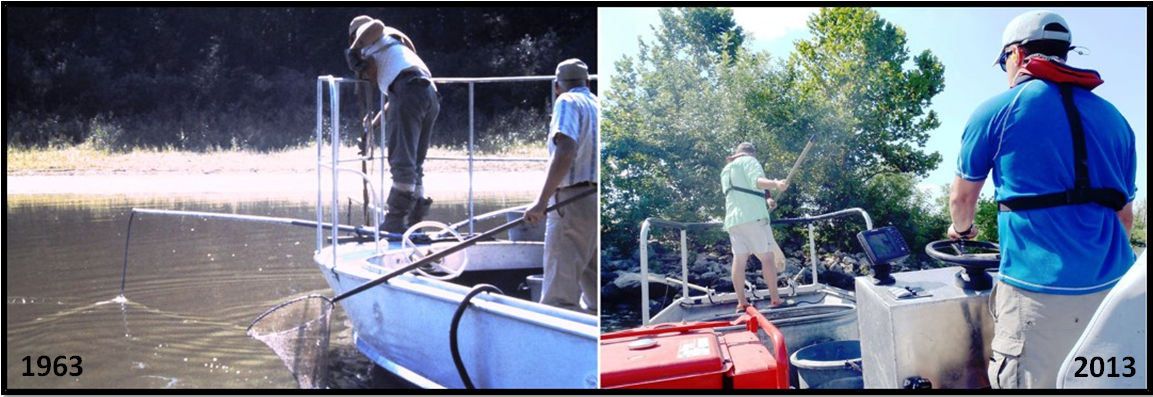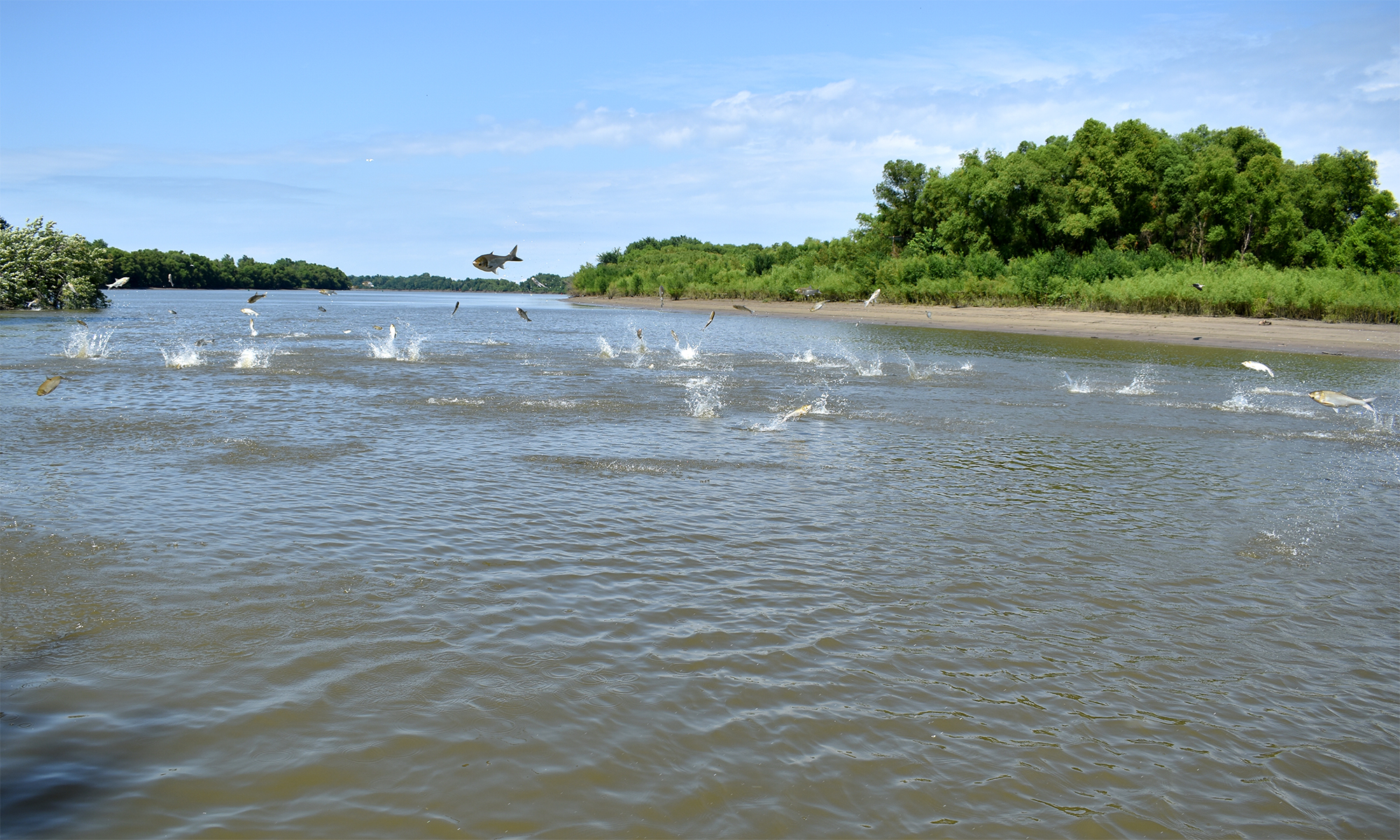The Modern LTEF Program
The Long-Term Survey and Assessment of Large River Fishes in Illinois at IRBS completes annual stratified-random sampling using boat-mounted pulsed-DC electrofishing on the Illinois River Waterway that extends from southwest Chicago to Alton, IL, and pools 16-22 on the Mississippi River. Fish sampling is conducted in three, six-week sampling periods from June 15 to October 31 primarily in main-channel border habitat, along with some historical side channel fixed sites in the Illinois River Waterway (see Historical LTEF below). Fish data collected includes species identification, weights, lengths, and the occurrences of external lesions, parasites, or deformities. Ancillary water quality data are also collected at each site and includes dissolved oxygen, specific conductance, Secchi transparency, and surface velocity.
The project was expanded in 2009, 2010, and 2019 to increase spatial coverage of fish monitoring in Illinois. In addition to sampling of the Illinois River Waterway and pools 16-22 of the Mississippi River by IRBS, sampling also occurs in pools 25 and 26 of the Mississippi River, the Kaskaskia River confluence of the Mississippi River, and Illinois portions of the Ohio and Wabash rivers. To accommodate this expansion, INHS staff from the Great Rivers Field Station, Eastern Illinois University, and Southern Illinois University all contribute to sampling.
The LTEF project has been funded by Sport Fish Restoration funds provided by the U.S. Fish and Wildlife Service and the Illinois Department of Natural Resources (project F-101-R) since 1989.

Historical LTEF
In 1957, William C. Starrett, former Director of the Forbes Biological Station at Havana, IL, initiated the Long Term Illinois River Fish Population Monitoring Program (long term electrofishing-LTEF) to relate spatial and temporal changes of the fish community to changes in water and habitat quality throughout the entire Illinois River.
Fishes were collected annually at fixed side-channel border sites throughout the Illinois River Waterway utilizing boat-mounted 3-phase AC electrofishing gear. There were a total of 28 collection sites with 27 sites on the Illinois Waterway (25 sites on the Illinois River and 2 sites on the lower Des Plaines River) and a single site on Pool 26 of the Mississippi River below Grafton, IL. Sites were sampled for one hour during late August and September each year, when water levels are at seasonal lows. Sampling was not conducted if water levels exceed specific criteria established for each site or water temperature fell below 50° F. The database contains data for most years; funding lapses and high water conditions precluded 8 years of sampling over the entire span of the LTEF project.
The LTEF program expanded fisheries monitoring and research efforts on the Illinois River and portions of the Mississippi River in 2009. The program expanded again to include fisheries monitoring on the Illinois portions of the Ohio and Wabash rivers in 2010 and the Kankakee and Iroquois rivers in 2013. However, the expanded fisheries monitoring differs from the historic AC electrofishing protocol by using pulsed-direct current (pulsed-DC) electrofishing protocols, similar to that used by the Upper Mississippi River Restoration Program’s Long-Term Resource Monitoring (LTRM) element on the Upper Mississippi River System. The 3-phase AC electrofishing was discontinued after 2015, although approximately half of the historic AC sites are still sampled with the pulsed-DC gear and protocol. Beginning in 2019, all sampling on the Upper Mississippi River has been conducted through IRBS in addition to the Illinois River. Sampling on the Kankakee and Iroquois Rivers was discontinued in 2020.


